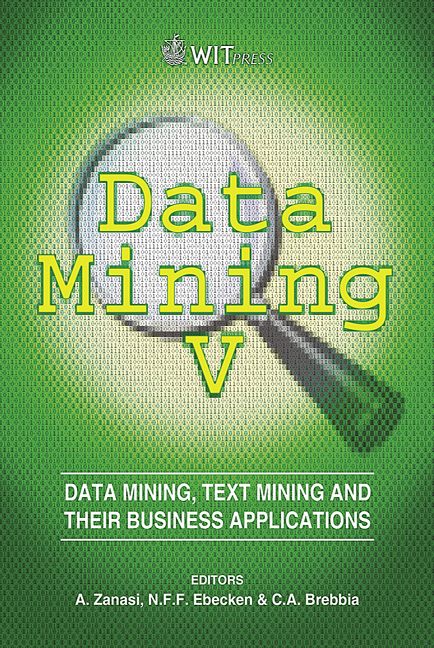Data Mining In Publishing: A Nice Feature Or A Necessity?
Price
Free (open access)
Volume
33
Pages
10
Published
2004
Size
517 kb
Paper DOI
10.2495/DATA040241
Copyright
WIT Press
Author(s)
T. M. Fernández-Steeger, F. Zander, S. Callsen, S. Steinberg & N. Brauns
Abstract
The two distribution channels in the publishing business – retail and subscription – compete against but at the same time complement each other. The following three examples show the importance and potentials of data mining in this stress field. The first example shows a model using Markov chains that will explain the coherence of these units. The other examples show how to estimate the medium lifetime of subscriptions and subsequently the maximum IPO. The last example finally explains how to create test groups for market research by employing supervised clustering and points out the advantages of using this method. Keywords: data mining, publishing, marketing, subscription, Markov chains, maximum IPO, Tornquist function, supply test, supervised clustering. 1 Introduction Bauer Verlagsgruppe (Bauer Publishing Group), founded in 1875, is one of the largest journal publishers in Europe. The company publishes 120 journals in 30 countries (Europe and overseas). The total sales in 2002 reached Euro 1,71 billion, with a percentage of 63% for Germany. The VKG Verlagvertriebs KG is the sales and marketing company of the Bauer group for German-speaking journals and provides about 50% of the group sales. The data mining department supports the VKG main units, the retail and the subscription unit. As today’s journal market in Germany is a nearly mature and strongly regulated market, it becomes more and more difficult for the main market participants to generate further growth without negative effects on their financial overall result. This is even more relevant for the market leaders. For that reason,
Keywords
data mining, publishing, marketing, subscription, Markov chains, maximum IPO, Tornquist function, supply test, supervised clustering.





